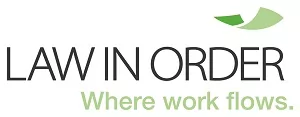Good Court Book preparation is an essential support to the work of counsel in the courtroom, but they are often done incorrectly or may be missing entirely.
A good Court Book should assist everyone including the judge, court staff, counsel, lawyers and witnesses.
There is no doubt that Court Books are here to stay, so what are the traps and how can they be avoided?
What are the Traps?
What can be the disadvantages of a badly prepared Court Book? Hearing delays, interruptions to the flow of evidence, the judge’s workload is increased and poor advocacy.
Some of the main problems with Court Books can be:
- Documents are not chronological
- Unnecessary duplication
- Irrelevant documents that do not add to the evidence
- Inadequate indexing
Also, a poorly constructed Court Book can cause trials to drag on and create unnecessary costs.
Tips for Better Court Books
Tip 1 – Who should be involved?
The partner or at least the senior associate responsible for the case must be actively involved in supervising the Court Book’s production rather than delegating it solely to junior lawyers or paralegals.
Counsel should also be involved to approve contents and organisation, as well as witness statements that contain Court Book references.
Tip 2 – Chronology
Chronology of documents may sound simple, but it may not be.
If there are documents with the same date, in what order should they be assembled? Email times and fax imprints as well as other indicators then play a role.
A well-informed lawyer or barrister will also be able to judge whether documents without dates, such as file notes or written messages, can be included in the chronology instead of relegated to the ‘undated documents’ section.
Bulky documents can break up the chronology in hard copy Court Books by separating one folder to the next one with multiple pages inbetween. Including the coversheet and execution and date pages (if relevant) is usually enough in the chronological section. The remainder can be included in other sections.
Sometimes duplicates are important, ie. when copies of a document contain evidence such as fax imprints, date stamps, annotations, etc. However, they shouldn’t be included unless something turns on the time or fact of receipt.
Superseded pleadings and particulars can be left out. If earlier versions will be pertinent at trial, start the Court Book with the current pleadings and particulars and have a separate section for the pleading history.
Only include affidavits if something turns on the time it was sworn. Treat it like any other bulky document, only including the front page and maybe an extract.
Exhibits should be treated like other documents – one copy only unless something turns on a separate copy.
One departure – for a witness providing a witness statement having previously sworn an affidavit, it is a good idea to integrate the relevant parts of the affidavit into the witness statement. Start with the electronic copy of the affidavit, amend the exhibit references to Court Book references and then include further evidence beyond the affidavit evidence. Bold or italics the further evidence. The affidavit content can still be used for forensic purposes if needed, but there is no need to include a copy of the witness’ affidavit in the Court Book.
Tip 3 – Presentation of Hard Copy Court Books
Use good quality folders that won’t fall apart and only fill them to two thirds capacity so if you need to add material, there will still be room.
Ensure any additional documents given to the court is hole-punched and unstapled, and ensure there are two copies; one for the judge and one for the witness or exhibit copy of the Court Book.
How Can We Help?
The rules and practice notes in each jurisdiction generally offer very little guidance in how to prepare your Court Book. Appeal Books, on the other hand, are governed by quite strict rules and requirements. When it comes to Appeal Books and Court Books, Law In Order understand what each court needs. Each jurisdiction has slightly different needs including style of indexing, method of pagination or procedure to be followed.
Our Appeal Book staff have the expertise and years of experience to guide you through the individual requirements, allowing you to present your Appeal Book in the best possible light.
We can help you by:
- Assessing the necessary content of the book
- Advising on the rules and requirements
- Adhering to processes and procedures required by the court
- Accessing documents from a court file for the preparation of the Appeal Book
- Preparing cover pages and indexes complete with volume and page numbers
- Compiling the Book with correct line numbering where required
- Alerting you to any discrepancies in the content (e.g. missing pages in a paginated document, skewed documents etc)
- Finishing the book in the appropriate format (e.g. in folders or bound etc)
- Filing and serving
All jurisdictions:
- High Court of Australia
- Federal Court of Australia
- Supreme Court of Appeal
- Family Court of Australia
- Industrial Relations Commission
- Fair Work Australia


